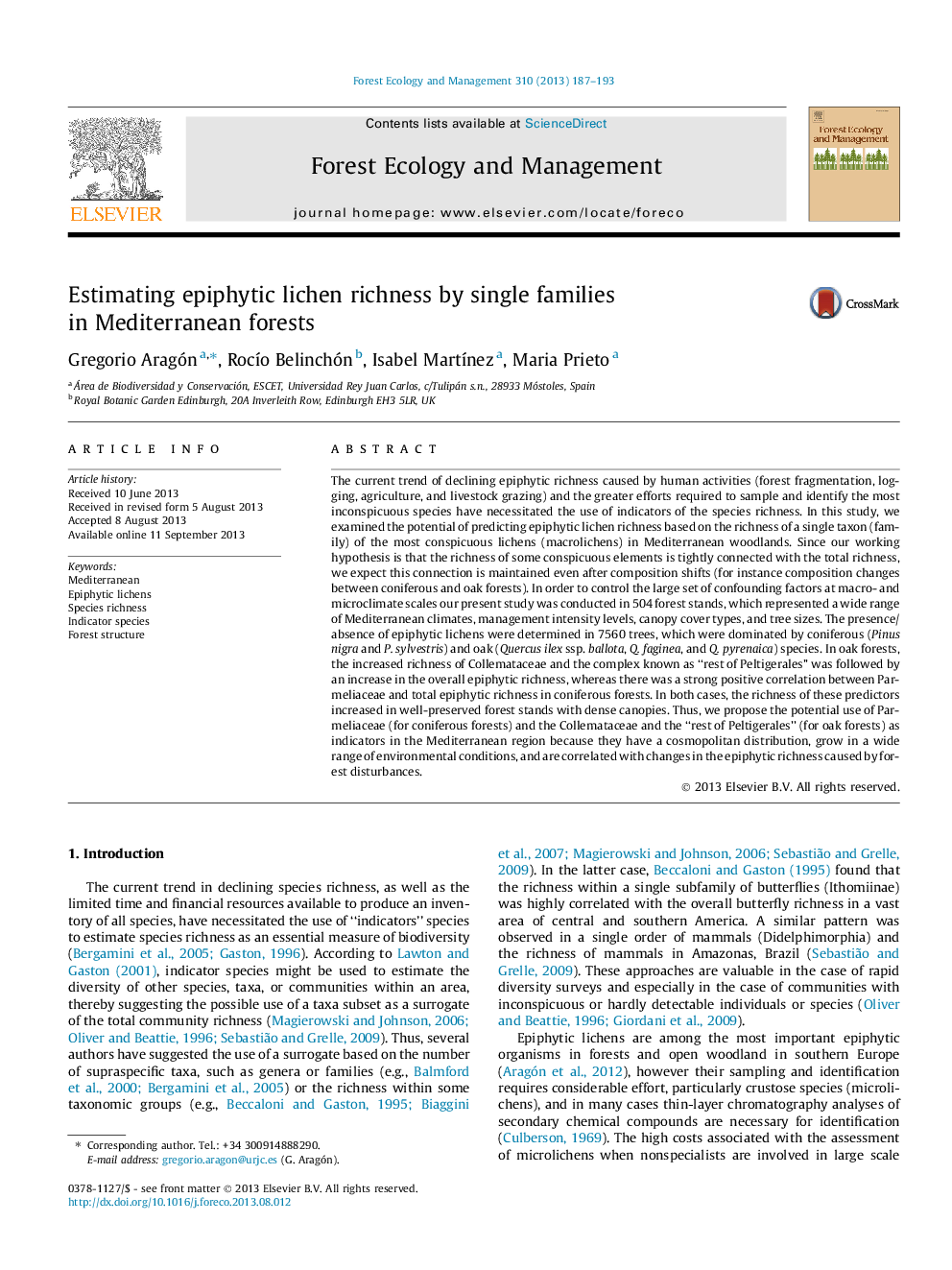| Article ID | Journal | Published Year | Pages | File Type |
|---|---|---|---|---|
| 6543662 | Forest Ecology and Management | 2013 | 7 Pages |
Abstract
The current trend of declining epiphytic richness caused by human activities (forest fragmentation, logging, agriculture, and livestock grazing) and the greater efforts required to sample and identify the most inconspicuous species have necessitated the use of indicators of the species richness. In this study, we examined the potential of predicting epiphytic lichen richness based on the richness of a single taxon (family) of the most conspicuous lichens (macrolichens) in Mediterranean woodlands. Since our working hypothesis is that the richness of some conspicuous elements is tightly connected with the total richness, we expect this connection is maintained even after composition shifts (for instance composition changes between coniferous and oak forests). In order to control the large set of confounding factors at macro- and microclimate scales our present study was conducted in 504 forest stands, which represented a wide range of Mediterranean climates, management intensity levels, canopy cover types, and tree sizes. The presence/absence of epiphytic lichens were determined in 7560 trees, which were dominated by coniferous (Pinus nigra and P. sylvestris) and oak (Quercus ilex ssp. ballota, Q. faginea, and Q. pyrenaica) species. In oak forests, the increased richness of Collemataceae and the complex known as “rest of Peltigerales” was followed by an increase in the overall epiphytic richness, whereas there was a strong positive correlation between Parmeliaceae and total epiphytic richness in coniferous forests. In both cases, the richness of these predictors increased in well-preserved forest stands with dense canopies. Thus, we propose the potential use of Parmeliaceae (for coniferous forests) and the Collemataceae and the “rest of Peltigerales” (for oak forests) as indicators in the Mediterranean region because they have a cosmopolitan distribution, grow in a wide range of environmental conditions, and are correlated with changes in the epiphytic richness caused by forest disturbances.
Related Topics
Life Sciences
Agricultural and Biological Sciences
Ecology, Evolution, Behavior and Systematics
Authors
Gregorio Aragón, RocÃo Belinchón, Isabel MartÃnez, Maria Prieto,
